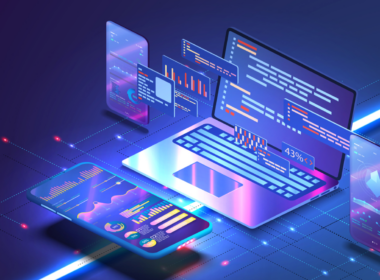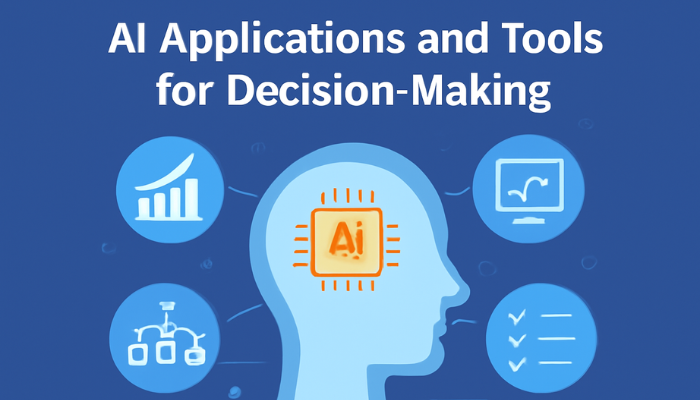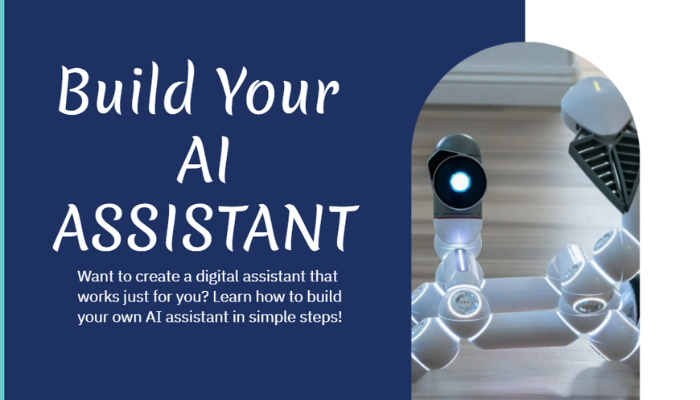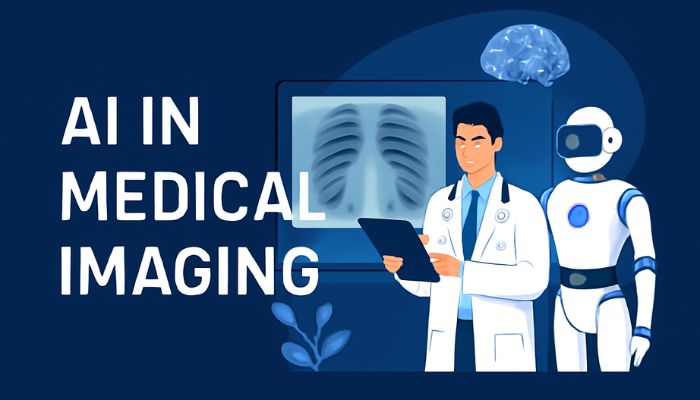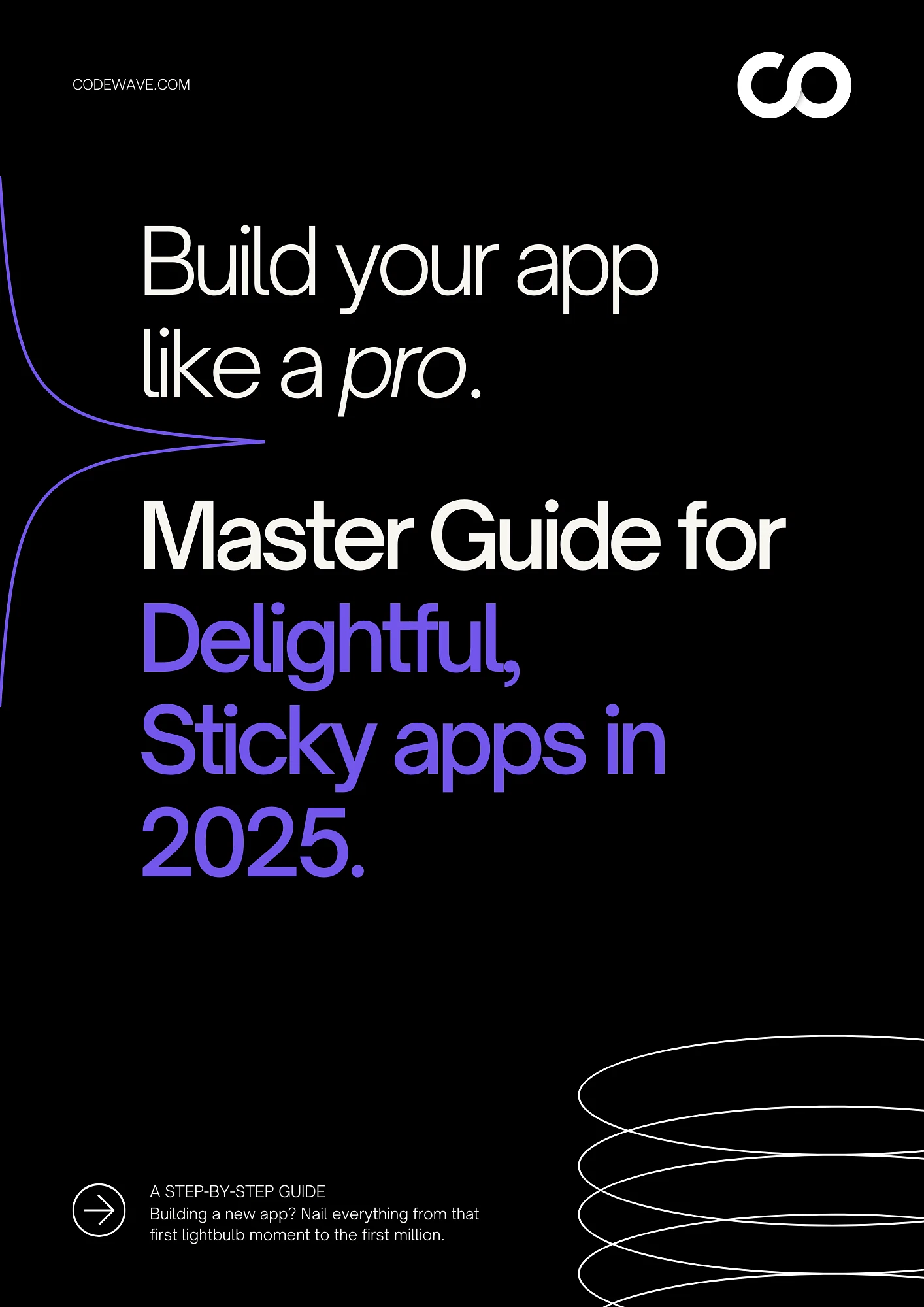Every day, business leaders face hundreds of decisions, some routine, others loaded with risk. There’s pressure to act quickly, but the stakes are high. The data is there, sure. But it’s scattered, hard to interpret, and constantly changing. Teams feel stuck, choices get delayed, and opportunities slip through the cracks.
That’s the real cost of decision paralysis.
You’re not alone. Across industries, companies are dealing with the same problem: too much information, not enough clarity. Forecasts miss the mark. Resources are spread thin. Leaders are forced to rely on gut instinct more than they’d like.
This is where AI starts to matter, not as a replacement for your thinking, but as a sharp sidekick that cuts through noise, spots patterns, and gives you something solid to act on.
In this guide, we’ll break down:
- Where AI fits in modern decision-making
- What tools are actually useful
- And how to implement them
By the end, you’ll know how to move faster, think clearer, and make decisions with more confidence.
Understanding AI Decision-Making
AI helps people make faster, more informed decisions by working through data that would take teams hours or even days to analyze manually. It spots patterns, flags trends, and suggests next steps based on what it sees.
In real business settings, that could mean forecasting next quarter’s demand, identifying churn risks, or prioritizing leads in your sales pipeline. The key is speed and consistency. AI works around the clock, without losing focus or needing a break.
How Does AI for Decision-Making Work?
AI enhances decision-making by processing large amounts of data to generate actionable insights. Here’s how it works:
- Data Collection: AI gathers data from multiple sources such as financial records, market trends, customer feedback, sales data, and regulatory information. The more diverse the data, the better the insights AI can generate.
- Data Preparation: Once collected, the data is cleaned, organized, and structured. This step ensures the data is accurate and ready for analysis by removing inconsistencies or errors that could impact the AI model’s performance.
- Embedding Model: Text and other data types are converted into numerical representations called vectors using embedding models. These vectors allow AI systems to understand and process the data.
- Vector Database: The vectors are stored in a vector database for easy and efficient retrieval. This setup ensures that relevant data can be quickly accessed when needed for decision-making, improving response time.
- APIs and Plugins: APIs and plugins connect the AI system with other tools and platforms. This makes it possible to pull additional data and carry out specific tasks seamlessly, such as pulling in updated market trends or customer insights.
- Orchestration Layer: The orchestration layer manages the workflow by making sure that the necessary data is retrieved, the right tasks are executed, and interactions with external APIs happen at the right time. It coordinates the entire process to ensure everything flows smoothly.
- Query Execution: When a user submits a decision-related query, the orchestration layer retrieves the relevant data and sends it to the AI model for processing. The query could be related to forecasting, market analysis, or resource allocation.
- LLM Processing: The AI model processes the data and query, providing insights based on the information it has received. Depending on the nature of the query, the model could generate strategic recommendations, risk assessments, or market predictions.
- Output: The AI model’s output, such as strategic recommendations, financial forecasts, or performance analysis, helps decision-makers take informed actions quickly. These insights can be used for operational improvements, market positioning, or long-term planning.
- Decision-Making App: The insights are delivered through a decision-making app that presents the data in a user-friendly format. This app enables decision-makers to easily access and act on the information provided.
- Feedback Loop: Feedback from users is essential for refining the AI model. By providing input on the relevance and accuracy of the insights, users help the AI model learn and improve over time, making future decisions more accurate.
- AI Agents: AI agents can take on complex tasks and learn from interactions. They use advanced reasoning to solve problems, making them capable of managing dynamic situations, adapting to new data, and improving decision-making as they evolve.
This flow outlines how AI supports decision-making by using data and technology to generate valuable insights. AI automates tasks, improves efficiency, and enables faster, more informed decision-making.
Why Executives Need to Rethink Decision-Making?
Running a business today means keeping up with faster shifts, sharper competition, and more demanding customers. Yet, decision-making at the top often lags behind.
Three forces are driving the urgency:
- Customers expect more, faster: Customers now expect faster service, greater personalization, and more convenience. With the digital-first approach becoming the norm, businesses must keep up with the higher expectations for speed and convenience.
- Global competition is fierce: At the same time, business leaders face increasing challenges on a global scale. Cultural differences, changing regulations, and political complexities add layers of difficulty when operating internationally, making competition tougher.
- Technology doesn’t wait: Technology is advancing at a rapid pace, and businesses need to keep up to stay competitive. By staying current with new technologies and adapting quickly, companies can maintain their edge. Failing to do so could result in falling behind more agile competitors.
Despite billions spent on business intelligence, most leaders still find themselves drowning in dashboards without clear direction. For managers at an average Fortune 500 company, this could translate into more than 530,000 days of lost working time and roughly $250 million of wasted labor costs per year.” – McKinsey.
Executives aren’t short on data, they’re short on clarity, structure, and speed. And that’s exactly where AI can help, not just by analyzing information but by reshaping how decisions are approached across the organization.
Let’s be honest, gut calls, Excel sheets, and endless meetings can only take you so far. If decisions still take days and feel like guesswork, AI might just be the co-worker you didn’t know you needed.
Benefits of AI in Decision-Making (With Clear Examples)
Even with dashboards full of data, decision-making can feel slow, uncertain, and reactionary. AI changes that by doing what people can’t always do, analyze everything, spot the signal in the noise, and respond in real time.
Below are some of the ways AI is making decisions sharper, faster, and more grounded.
1. Make Faster Decisions
AI systems can quickly scan through massive amounts of information and give you answers in seconds. This saves time, especially when decisions need to be made on the spot.
Example: A food delivery company uses AI to assign drivers to orders instantly, based on traffic, location, and delivery times. This cuts delays and keeps customers happy.
2. Improve Forecasting and Planning
AI learns from past data and current trends to make predictions about what might happen next. This helps teams plan ahead with more confidence.
Example: A fashion brand uses AI to forecast demand for winter jackets by looking at last year’s sales, this year’s weather, and online search trends. They order just the right amount, no excess stock, no shortages.
3. Use Resources More Wisely
With AI, businesses can spot where they’re overspending or underusing their staff, equipment, or time, and adjust accordingly.
Example: A hospital uses AI to predict when emergency rooms will be busiest. It schedules more doctors and nurses for those times, reducing wait times and avoiding overstaffing during quiet hours.
4. Reduce Bias in Decisions
AI can help make fairer decisions by focusing only on the data, not on personal opinions, emotions, or assumptions.
Example: A company uses AI to help review job applications. Instead of focusing on names or where someone studied, it looks at skills and past experience to create a more equal hiring process.
5. Spot Problems Early (Risk Detection)
AI can find signs of trouble before they turn into bigger problems. It connects patterns that may be hard for humans to notice.
Example: A bank uses AI to watch for strange activity in customer accounts. If someone suddenly spends large amounts in a new country, the system flags it, preventing fraud.
6. Keep Decisions Consistent at Scale
As your business grows, making the same quality decisions across departments or locations can be tough. AI keeps the logic consistent, no matter how many times it’s applied.
Example: An eCommerce platform uses AI to handle refund requests. It follows the same rules every time, reviewing order history and customer behavior, so each customer gets a fair and fast response.
Also Read: AI Software Tools and Use Cases in 2025
Top 10 AI Tools for Decision-Making
Choosing the right AI tool can help your team make faster, smarter, and more reliable decisions. Here’s a list of 10 widely used AI tools designed to support decision-making in different ways, from data analysis to predictions to everyday task support.
IBM Watson Studio
IBM Watson Studio helps businesses build, train, and manage machine learning models using both structured (spreadsheets, databases) and unstructured data (emails, PDFs, images). It’s widely used by large enterprises for high-stakes decision-making in areas like healthcare, finance, and operations.
Key Features:
- AutoAI Module: Automatically selects the right algorithms, processes the data, tests multiple models, and ranks them based on accuracy, saving analysts weeks of trial and error.
- Bias Detection and Explainability: Includes built-in tools to detect bias in models (e.g., gender or racial bias) and explains why the model made certain predictions, so decision-makers can trust the output.
- Collaborative Model Building: Multiple team members can work on the same model in real time, share assets, and comment, ideal for cross-functional decision teams like product, finance, or risk.
- Support for Unstructured Data: Can handle PDFs, images, and free-text documents,helping businesses use data that would otherwise sit idle and unanalysed.
Practical Example: A large insurance firm uses Watson Studio to predict the likelihood of claim fraud. By feeding past claim data into Watson, the system identifies patterns linked to suspicious behavior. Claims are then scored by risk level. This allows managers to review only the high-risk ones, speeding up honest claim approvals and saving investigative resources.
2. Google Cloud AutoML
AutoML is a suite of tools from Google that lets non-experts train custom machine learning models using their own data. It’s designed for teams that know their business problems well but lack deep AI skills.
Key Features:
- Custom Model Training Without Code: Users upload labeled datasets, and AutoML builds a tailored model without needing to write code,perfect for marketing, sales, or HR teams.
- Multi-Type Data Support: Supports training on images, text, or tabular (spreadsheet-style) data, so teams can solve a wide range of problems from image classification to forecasting.
- Feature Importance Insights: After training, AutoML ranks which variables had the most impact on each prediction, helping teams understand what’s driving customer behavior, churn, etc.
- Seamless Integration with Google Tools: Works directly with Google Cloud services like BigQuery, Firebase, and Vertex AI, so teams can automate actions like email triggers, alerts, or dashboard updates.
Practical Example: A hotel booking platform uses AutoML to predict which users are likely to cancel their reservations. The team uploads past booking behavior, user profiles, and cancellation history into AutoML. The model then predicts future cancellations and assigns a risk score to every new booking. Customer service teams use this score to reach out early or offer incentives, reducing last-minute cancellations.
3. Microsoft Power BI (with AI Insights)
Microsoft Power BI is a business intelligence platform that transforms raw data into clear, visual dashboards and reports. Its AI-powered features help uncover hidden patterns, make forecasts, and spot anomalies that humans might miss. It connects seamlessly with Excel, SharePoint, and other Microsoft tools, making it ideal for decision-making across departments, from finance to sales.
Key Features:
- AI Visuals and Decomposition Trees
Breaks down key metrics (like declining revenue) into the exact reasons why they’re changing. It shows which variables had the greatest impact, such as region, product line, or season. - Anomaly Detection
Automatically flags sudden spikes or drops in data, whether it’s expenses, customer complaints, or supply delays, so action can be taken quickly. - Natural Language Q&A
Lets users type simple questions like “What were last month’s top-selling products?” and get instant answers, no formulas or coding needed. - Integration with Azure Machine Learning
Brings in models trained in Azure and applies predictions directly inside Power BI reports, allowing teams to act without switching tools. - Scheduled Alerts and Triggers
Set alerts on key metrics like daily sales or churn rate; when thresholds are crossed, Power BI notifies relevant decision-makers immediately.
Practical Example: A retail brand uses Power BI to track in-store and online sales. The anomaly detection feature alerts them when a particular region sees an unexpected drop in footfall. After drilling down into the data, they discover a local competitor’s promotion and launch a same-day campaign to regain lost traffic.
4. Tableau
Tableau is a powerful data visualization tool known for its ability to create interactive dashboards. When paired with Salesforce’s Einstein AI, it goes beyond visuals, helping users forecast trends, uncover drivers behind performance, and even ask natural language questions to analyze data.
Key Features:
- Einstein Discovery Integration: Adds predictive insights right into dashboards, so teams can not only see what’s happening but also why it’s happening and what to expect next.
- Scenario Modeling (“What-If” Analysis): Users can test different scenarios (e.g., price changes or ad spend shifts) and immediately see the projected impact on revenue or ROI.
- Explain Data Tool: Automatically analyzes data points that seem out of the ordinary and explains what might be causing the variation in plain language.
- Drag-and-Drop Forecasting: Provides trendlines and future predictions based on historical patterns,useful for demand planning, budgeting, or marketing calendar decisions.
Practical Example:
A regional sales director uses Tableau + Einstein to analyze territory performance. The “Explain Data” feature shows that a sudden dip in one area was tied to a product recall. Einstein Discovery suggests which discounts are most likely to help recover sales, enabling the team to act immediately and reduce revenue loss.
Top Read: AI Tools for Small Businesses: Applications and Efficiency
5. H2O.ai
H2O.ai is an open-source machine learning platform built for analysts and data scientists to create predictive models with speed and precision. It’s known for its autoML capabilities, model transparency, and ability to handle large datasets. Businesses across banking, insurance, and healthcare use it to guide decisions on credit risk, fraud detection, churn, and more.
Key Features:
- AutoML Interface for Fast Model Creation: Users can automatically train and compare dozens of models without writing code, which is ideal for teams that need accurate results fast.
- Model Explainability with SHAP Values: Breaks down exactly how much each variable (like age, income, or location) influenced a prediction, making it easier to justify decisions to stakeholders or regulators.
- Built-In Algorithms for Classification, Regression, and Time Series: Whether you’re predicting churn, loan defaults, or future sales, H2O provides optimized algorithms for various decision-making tasks.
- Scalability for Large Datasets: Designed to handle millions of records quickly, making it useful for enterprises with big customer bases or real-time decision requirements.
Practical Example: A fintech company uses H2O.ai to create a model that predicts which customers are likely to default on loans. Each prediction comes with an explanation of key factors (like income volatility or repayment history), allowing underwriters to make fairer and faster lending decisions.
6. Qlik Sense
Qlik Sense is a data analytics and visualization tool that focuses on associative data exploration, meaning it shows users how different data points relate to each other in real time. It’s used in operations, supply chain, and logistics to support fast, flexible decision-making.
Key Features:
- Associative Data Engine: Unlike traditional tools, Qlik doesn’t force linear queries. You can explore relationships across all data fields,helping you spot hidden connections between sales, inventory, region, or team performance.
- Augmented Analytics and Insight Suggestions: Automatically highlights insights, trends, or anomalies you might miss, without needing to define metrics in advance.
- Smart Search Functionality: Type any word (like “delayed shipments”) and Qlik surfaces all related charts, data sources, and KPIs across the dashboard instantly.
- Mobile-Responsive Dashboards: Executives can monitor and make decisions on the go using fully interactive dashboards designed for mobile use, ideal for field teams.
Practical Example: A logistics firm uses Qlik Sense to analyze delivery patterns across cities. When fuel costs spike, Qlik highlights which routes are most expensive and suggests alternatives based on traffic data, package volume, and distance. This helps managers reallocate deliveries in real time to save costs.
7. Sisense
Sisense is an AI-driven analytics platform that lets businesses pull together complex datasets and turn them into real-time, actionable insights. What sets it apart is its ability to embed analytics into existing tools like CRMs, ERPs, or custom apps,making decision-making part of daily workflows, not a separate process.
Key Features:
- In-Chip Processing: Speeds up complex analytics by processing data in RAM rather than relying on slower disk-based storage,making real-time decisions possible on large datasets.
- Embedded Analytics: Lets you integrate AI-driven insights directly into the platforms your team already uses, such as Salesforce, HubSpot, or custom web dashboards.
- Data Mashup Capabilities: Combines data from multiple sources (like Google Analytics, ERP, customer support tools) into one unified view,ideal for multi-department decision-making.
- AI-Powered Forecasting: Offers demand forecasting, trend detection, and anomaly alerts using built-in machine learning models.
- Custom Alerting Rules: Set conditions (e.g., “if conversion rate drops below 2%”) to receive automatic notifications, no need to check dashboards constantly.
Practical Example: A SaaS product team uses Sisense to monitor user behavior across their web app. When churn indicators, like fewer logins or cancelled renewals are detected, the embedded analytics recommend engagement campaigns. This helps reduce churn without waiting for monthly reports.
8. RapidMiner
RapidMiner is a visual, no-code platform that simplifies machine learning for business users. It supports predictive analytics across industries,used for things like customer churn modeling, sales forecasting, and product optimization.
Key Features:
- Drag-and-Drop Model Building: Users can build entire machine learning pipelines visually, with no need to write code,ideal for marketing or operations teams.
- Automated Data Preparation: Cleans, normalizes, and transforms data before it’s used in models,removing the manual effort of pre-processing.
- Prebuilt Templates for Common Use Cases: Includes ready-to-use blueprints for things like churn analysis, fraud detection, and inventory forecasting.
- Performance Comparison Tools: After building multiple models, RapidMiner shows side-by-side comparisons of accuracy, error, and decision impact,so you can pick the best one for action.
- Business-Friendly Explanations: Explains model decisions in plain English (e.g., “Customer likely to churn because of low engagement and past complaint ticket”), helping non-technical teams trust the results.
Practical Example: A telecom company builds a churn prediction model using RapidMiner. Customer success teams use the results to focus on high-risk users, offering timely discounts or service tweaks, reducing churn by 18% over one quarter.
9. TIBCO Spotfire
Spotfire is a smart data analytics platform used heavily in energy, manufacturing, and life sciences. It enables decision-makers to explore data visually, spot outliers, and use AI recommendations to act early, before issues escalate.
Key Features:
- Real-Time Streaming Analytics: Processes live data (like sensor readings or transaction streams) to help with decisions that can’t wait,perfect for safety monitoring or fraud detection.
- AI-Powered Recommendations: Spotfire scans through data and highlights patterns or shifts you might not expect, like sudden drops in product performance or rising costs.
- GeoAnalytics Capabilities: Overlay business data on maps,ideal for decisions related to supply chains, shipping zones, or service territories.
- Integrated Predictive Modeling: You can build and apply models directly inside dashboards to forecast demand, quality issues, or delivery delays.
- Customizable KPIs and Alerts: Define KPIs for your team and set rule-based alerts, so stakeholders are notified when performance dips or targets are exceeded.
Practical Example: An energy firm uses Spotfire to monitor field sensor data from oil wells. When abnormal pressure patterns appear, Spotfire triggers an alert and shows likely causes, letting the operations team intervene before equipment fails.
10. ChatGPT (by OpenAI)
ChatGPT is an AI-powered language model that supports early-stage thinking and fast decision-support across domains. It doesn’t crunch numbers like a BI tool, but it helps executives and managers brainstorm ideas, summarize reports, assess options, and simulate decisions,all through natural conversations.
Key Features:
- Contextual Summarization: Can read long documents (emails, reports, transcripts) and distill the most relevant information, speeding up internal decision cycles.
- Scenario Exploration: Users can prompt ChatGPT with “what-if” situations (e.g., “What if we reduce pricing by 10%?”) and explore pros, cons, and potential reactions.
- Idea Generation and Comparison: Generates multiple solutions to a problem and compares them side by side,useful for strategic planning or messaging.
- Prompt Memory and Refinement: You can guide ChatGPT across multiple steps (e.g., refine a strategy deck, explain a trend, write a decision brief) while it remembers your direction.
Practical Example: A founder preparing for a board meeting uses ChatGPT to summarize monthly performance metrics, draft talking points, and prepare answers for anticipated questions, all in under 30 minutes.
Choosing the right AI tools is just part of the puzzle. Working with a top AI development company can take your project further. Discover top AI development companies here.
Before you commit to any tool, take a breath. With so many options out there, it’s easy to get swept up in features, promises, or brand names. But decision-making tools should solve your problems ,not just tick boxes.
Ready to Plug AI Into Your Workflow? Leave the Tech Hassle to Codewave Experts
So, how do you figure out which one fits?
Choosing and Implementing the Right AI Tool for Decision-Making
Wondering how to pick the right AI tool for better decision-making? This guide walks you through choosing a tool that fits your needs and shows you how to make it work seamlessly for your team.
1. Start with the Decision, Not the Tool
Identify the decisions you want to improve. Whether they’re operational, strategic, or customer-facing, the AI tool should align with the type of decision you’re making. If the tool doesn’t support the decision-making process, it’s not the right fit.
2. Understand Your Team’s Technical Readiness
AI tools vary in complexity. Consider who will be using the tool daily, whether they’re analysts or non-technical users. The tool should match your team’s skill level to ensure better adoption and fewer bottlenecks.
3. Evaluate Integration with Your Current Systems
Choose a tool that integrates seamlessly with your existing systems, data, and workflows. The right tool will save time, reduce errors, and help deliver results faster by fitting into your tech stack.
4. Prioritize Explainability and Accountability
If your AI tool makes recommendations, ensure you understand why. Choose a tool that provides clear explanations and allows you to audit or challenge its decisions when needed. Transparency is key for trust and accountability.
5. Look Into Scalability and Long-term Fit
The AI tool should grow with your business. Will it handle increased data, users, or models as you scale? Choose a tool that comes with ongoing updates, support, and training to remain effective as your needs evolve.
6. Clean and Prepare Your Data
AI relies on clean, accurate data. Gather all relevant past data and ensure it’s free from errors. Well-prepared data ensures that your AI tool makes better decisions and doesn’t reinforce bad patterns.
7. Train and Test the Model
Once the tool is set up, test it with real-world scenarios and edge cases. Ensure the AI provides valuable insights that your team can rely on in high-pressure situations. This helps refine the tool, ensuring it delivers actionable results.
8. Integrate Insights into Decision Points
Make sure AI insights are directly integrated into your decision-making processes. Whether it’s in your CRM, task list, or meeting prep materials, ensure the tool provides recommendations where and when they’re needed.
9. Build a Feedback Loop for Continuous Improvement
Encourage your team to provide feedback on the AI’s performance, helping to refine and improve the tool over time. Continuous feedback ensures the AI remains relevant and adaptable to real-world changes.
10. Measure Real-World Impact
Track how the AI tool is impacting business outcomes, such as faster response times, fewer mistakes, and smoother workflows. If it’s improving decision-making, your AI tool is successfully integrated into your processes.
By following this approach, you’ll choose and implement an AI tool that fits your needs and improves decision-making. Proper planning and continuous refinement will ensure your AI tool remains effective and delivers real value.
Ready to Implement AI Into Your Workflow?
We build AI systems that plug right into how your team already works,so decisions get easier, faster, and way more reliable.
Final Thoughts
AI works best when it’s aligned with real decisions, decisions that happen daily, across teams, and under pressure. When integrated thoughtfully, it speeds up response time, adds clarity where it’s missing, and helps your team move with more confidence.
At Codewave, we bring over a decade of experience helping businesses do exactly that. From choosing the right tools to embedding AI directly into your workflow, we partner with you to build systems that support your team’s thinking, not replace it.
Our services encompass:
- Custom AI/ML Development: Crafting tailored AI solutions, including GenAI tools, conversational bots, and self-improving systems that lead to immediate, visible business impact.
- Digital Transformation: Designing solutions that eliminate inefficiencies and unify your digital presence, unlocking a world where every process flows, every touchpoint connects, and every opportunity is within reach.
- IT Consulting: Providing expert guidance on digital transformation journeys, helping identify opportunities, select the right technologies, and implement AI strategies effectively.
- Process Automation: Implementing AI-driven automation to streamline operations, reduce manual tasks, and enhance efficiency across various business processes.
- Analytics as a Service: Offering subscription-based BI tools for non-IT professionals, empowering data-driven decisions without the complexity.
With over 400 digital transformation projects completed across more than 9 industries, Codewave is equipped to help you integrate AI seamlessly into your decision-making processes.
Let’s build AI that fits the way you work.
Codewave is a UX first design thinking & digital transformation services company, designing & engineering innovative mobile apps, cloud, & edge solutions.

